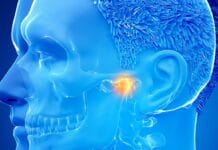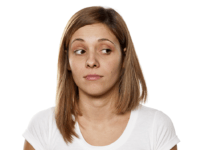The challenges dental hygienists currently face are quite different from those we have faced in the past. In the past, the challenge was finding effective treatment and maintenance of periodontal disease. Now, we face the challenge of highlighting the importance of a dental hygienist’s role in patient care in the first place.
Several states have recently passed bills that allow dental assistants to scale teeth. Though hygienists have fought vehemently to prevent this from occurring, it is happening nonetheless. There is a need for well-trained and educated dental hygienists to continue serving alongside dentists to improve oral health and overall health.
Periodontal disease has played a major role in the development of health care strategies for quite some time, which is why dental hygienists are valuable and dental hygiene is a needed profession. Here’s a look back at periodontal disease through history and into the future.
Early Civilization
There is clear evidence that, as far back as 5000 BC, people were suffering from periodontal disease. The Royal Library of Ashurbanipal holds thousands of clay tablets with information showing indications of periodontal disease and the treatments that were used in early civilization. One such remedy states, “…if a man’s teeth are loose and itch, a mixture of myrrh, asafetida, and opopanax, as well as pine-turpentine shall be rubbed on his teeth until blood comes forth and he shall recover.”1
Hippocrates wrote about the dentition in The Hippocratic Collection. He specifically describes what he believed to be the etiology of periodontal disease. He believed it was due to the accumulation of calculus, which is referred to as “pituita” in his writings. He describes the disease as “The gums are detached from the teeth and smell bad.”1 Most dental professionals agree that this is a very good description of periodontal disease.
Aulus Cornelius Celsus, a Roman encyclopedist known best for his medical writings in De Medicina, also wrote about periodontal disease. He described it as a disease that affects the soft parts of the mouth. He goes on to describe treatment as, “If the gums separate from the teeth, it is beneficial to chew purslane or pears and apples and keep their juices in the mouth.”1
Periodontal Disease in the 1800s
In the 19th century, there was much debate about the cause and treatment of what was described as “destructive gum disease.” The center of the debate was whether it was a systemic or local cause of disease. It is interesting to think that debate raged on for hundreds of years before we came to a clear consensus.2
Periodontal disease went by a variety of names in the 1800s, including Riggs’ disease. Riggs’ disease was described as a purulent inflammation of the dental periosteum. It was named after the American dentist John Riggs. Dr. Riggs was Mark Twain’s personal dentist and one of the main characters in Twain’s short story Happy Memories of the Dental Chair. In his short story, Twain describes his experience of personal periodontal therapy.2,3
Twain mentions, for example, what Dr. Riggs told him at the onset of his disease diagnosis, “He said most people have Rigg’s disease, especially people whose teeth appeared to be perfectly sound and flawless; said one did not often find it with bad teeth, said it was heritable – where it existed in the parents, it would usually be found in the children.”3
Periodontal Disease in the 1900s
In May 1914, two female dentists, Gillette Hayden and Grace Rogers Spalding, led the establishment of the first national organization focused on diagnosing and treating periodontal disease. The organization was the American Academy of Oral Prophylaxis and Periodontology. In 1919, the name was changed to the American Academy of Periodontology.2
In the 1920s, the first peer-reviewed scientific journal focusing on periodontal disease was published. In 1930, the AAP published the Journal of Periodontology. In the beginning, there were very few publications dedicated to periodontics. However, with so many high-quality manuscripts being submitted, it became clear more journals were needed to meet the demand. Four new publications have been added to encompass the increasing number of studies and research that involve periodontics: Journal of Periodontal Research (1966), Journal of Clinical Periodontology (1974), International Journal of Periodontics and Restorative Dentistry (1981), and Periodontology 2000 (1993).2
Before World War II, the dental requirements for soldiers included military recruits must have six opposing teeth. During recruitment in the 1940s, it was discovered around 400,000 young men were disqualified because they did not possess six opposing teeth. The standards were lowered to accommodate the need for recruits to serve in World War II. Although much of the tooth loss was attributed to dental caries, this situation was brought to the attention of the US Congress. Soon after, on June 24, 1948, President Harry S. Truman signed legislation to form the National Institute of Dental Research. It would later be renamed the National Institute of Dental and Craniofacial Research (NIDCR).2
This research program has been responsible for many significant contributions to dentistry, particularly in the area of periodontal research. Scientists at the NIDCR were the first to culture a spirochete. They have also done extensive research in the areas of oral microbiology and immunology, extracellular matrix biology, and epidemiology as it applies to periodontal disease.2
Periodontics in the 21st Century and the Future
Dentistry has trudged ahead in many areas. The introduction of community water fluoridation reduced caries by 30% to 50%. The introduction of dental implants has been a game-changer for tooth replacement. Some researchers are even isolating stem cells to use for tissue reconstruction. Yet, periodontal disease has remained stationary, primarily focusing on treatment and prevention.4
In the 21st century and moving forward, periodontists’ and dental hygienists’ roles are more central and important than ever in patient care. The association between oral and systemic health has been backed by robust evidence. Many systemic diseases have a bi-directional association with periodontal disease. Certain systemic diseases increase the risk of periodontal disease, and periodontal disease increases the risk of certain systemic diseases. Life expectancy is higher than ever, and with longer life spans, we see more periodontally involved patients. The risk of periodontal disease increases with age, making a larger population needing periodontal therapy and maintenance.4
Research looking deeper into the immune response and its association to periodontal disease recently discovered a culprit in inflammation and bone loss associated with periodontal disease. The study found that the oral microbiome can trigger Th17 cells to switch from a protective role to a destructive role. This knowledge may pave the way to a better understanding of disease onset and progression and potential new treatment options.5
Change is imminent in the way we treat periodontal disease. Dental hygienists’ role in dental care is more important than ever. Though it is important to fight for a patient’s right to have a qualified dental professional provide treatment, dental hygienists should also focus on where the dental hygiene profession is going in the future. Dental hygienists need to push to have more autonomy to treat patients by encompassing our full scope of practice.
Don’t get me wrong. I am not advocating for independent practices, although some hygienists may like to see that. Nor am I implying that we sit back and passively allow more bills to pass that allow assistants to scale. What I am advocating for is the ability to treat and diagnose periodontal disease, treat patients in long-term health care facilities that are being neglected, and become a more central figure in health care.
Conclusion
Clearly, periodontal disease has played a major role in the development of health care strategies. We have learned a lot through the years, and we continue to better our understanding of this complex disease that has plagued humans for quite some time.
Do we have challenges before us? Absolutely. Have we dealt with some serious challenges in the past? You bet. However, dental hygiene has triumphed. I would love to see more hygienists pushing forward and fewer burying their heads in the sand or giving up altogether. Dental hygiene as a career has come a long way. In my estimation, there is still a long way to go. Stand strong, my fellow hygienists. We are in this together and will prevail better and stronger.
Before you leave, check out the Today’s RDH self-study CE courses. All courses are peer-reviewed and non-sponsored to focus solely on high-quality education. Click here now.
Listen to the Today’s RDH Dental Hygiene Podcast Below:
References
- Brkic, Z. Pavlić, V. Periodontology: The Historical Outline From Ancient Times Until the 20th Century. Vojnosanitetski Pregled. 2017; 74(2): 193-199. https://doiserbia.nb.rs/img/doi/0042-8450/2017/0042-84501600169B.pdf
- Armitage, G.C. A Brief History of Periodontics in the United States of America: Pioneers and Thought-Leaders of the Past, and Current Challenges. Periodontol 2000. 2020; 82(1): 12-25. https://pubmed.ncbi.nlm.nih.gov/31850629/
- Maloney, W.J. A Periodontal Case Report by Dr. S.L. Clemens. J Dent Res. 2010; 89(7): 676-678. https://pubmed.ncbi.nlm.nih.gov/20400720/
- Choi, S.H. A New Role for Periodontists in the 21st Century. J Periodontal Implant Sci. 2011; 41(6): 261-262. https://www.ncbi.nlm.nih.gov/pmc/articles/PMC3259233/
- Researchers Identify Immune Culprits Linked to Inflammation and Bone Loss in Gum Disease. (2018, October 17). NIH: National Institute of Dental and Craniofacial Research. https://www.nidcr.nih.gov/news-events/researchers-identify-immune-culprits-linked-inflammation-bone-loss-gum-disease










